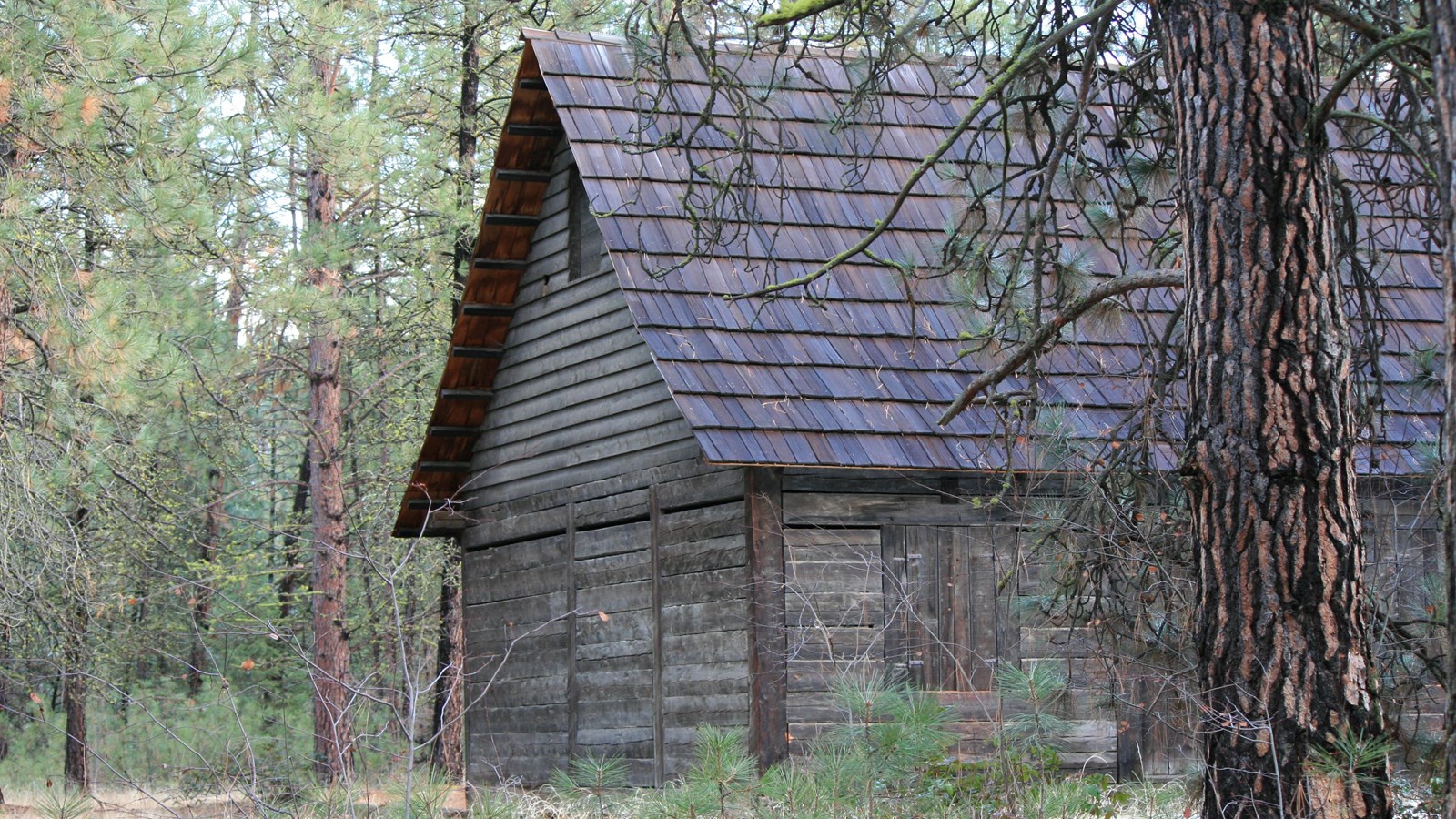Last updated: November 20, 2023
Place
Mission Point

NPS
Cellular Signal, Historical/Interpretive Information/Exhibits, Parking - Auto, Pets Allowed, Trailhead
On a bluff overlooking the former Kettle Falls, Mission Point is one of the richest and concentrated points of history in the Pacific Northwest with over 9,000 years of continuous human presence. St. Paul’s Mission, an Indian Jesuit Mission orginally built in 1847 and reconstructed in 1939, stands watch. The point also contains several points including native culture and Fort Colvile, a Hudson's Bay fur trading post.
Mission Point is open to the public year round. St. Paul's Mission is open and self-guided however it is NOT wheelchair accessible. Take a hike and the ponderosa pine forest on a short, self-guided hike out to the point.
A cell phone ranger audio tour is available and provides information about each point of interest.
Stop by the Kettle Falls Information Center to see historic pictures and exhibts.
History of St. Paul's Mission
In early November of 1838, two Catholic priests, Father François Norbert Blanchet and Father Modeste Demers were enroute from Montreal to Fort Vancouver when they stopped at Fort Colvile, a fur trading post on the Upper Columbia River near Kettle Falls. Throughout the region, the fur traders promoted their coming to the Native Americans. Representatives from five tribes came. For three days, the priests along with translators conducted religious services, including daily mass and 19 baptisms. Their activities marked the first Catholic presence in the region between the Cascade and Rocky Mountains. As they left the trading post, the priests promised the fur traders and natives that someone would return to establish a mission for the Upper Columbia River.
In 1847, Father Peter de Vos began his year-long residency at St. Paul’s. With assistance from fur traders at Fort Colvile, he began construction of a larger, substantial chapel to function both as a residence and a mission. Several cedar logs were chiseled and handhewn into beams for the frame. Instead of nails, pegs were used to keep the beams in place. White mud was chinked into the walls to prevent drafts. The building also featured glass windows. Two wood-burning stoves were installed to provide heat during the cold winter. By the end of the year, building of the mission was complete.
Learn more about the history of St. Paul’s Mission.
